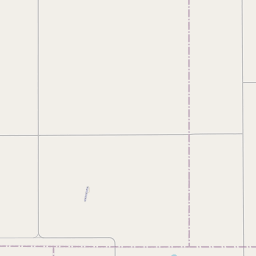Site of Holt School (2 miles east)
Historical marker location:






In 1913, G.C. Holt moved his wife and eight children to the Briscoe-Floyd county line. Because of the distance to the nearest school, Holt and neighbor E.M. Lawson organized the Holt school district, commissioned on September 7, 1920 with two acres of land. In 1921, trustees built a one-room frame schoolhouse, and it opened with 15 students, one teacher and courses for grades 1-7. Over the years, teachers often boarded with local families. The school closed in 1933 during the Great Depression, and the building stood vacant until 1944, when it was dismantled. Later, an irrigation well for area farms was located on the former school site. (2005)
As one of the most visible programs of the Texas Historical Commission (THC), historical markers commemorate diverse topics in Texas history, including: the history and architecture of houses, commercial and public buildings, religious congregations, and military sites; events that changed the course of local and state history; and individuals who have made lasting contributions to the state, community organizations, and businesses.
The University of Texas at Austin, founded in 1883, is one of the largest universities in the United States and has produced many notable alumni, including several U.S. presidents.
During the late 19th and early 20th centuries, Briscoe County experienced a boom in cattle ranching. The arrival of the railroad in the area in the 1880s further facilitated the growth of the industry, leading to an increase in population and economic prosperity. Ranchers from all over the state flocked to Briscoe County, establishing large cattle ranches and contributing to the region's reputation as a major center of the Texas cattle industry.
The county also played a significant role in the development of the oil and gas industry in Texas. In the early 20th century, oil was discovered in Briscoe County, leading to the establishment of oil wells and the subsequent growth of towns such as Silverton. The oil boom brought new economic opportunities to the area and attracted a diverse population, including workers from other parts of Texas and beyond.
Today, Briscoe County continues to be an important agricultural center, with cattle ranching, farming, and oil and gas production as its primary industries. Its rich history, shaped by the contributions of Native Americans, cattle ranchers, and oilmen, has left a lasting legacy. The county's natural beauty, including its canyons and wide open spaces, attracts visitors who come to enjoy outdoor activities such as hiking, fishing, and birdwatching.
Briscoe County Timeline
This timeline provides a glimpse into the major events and milestones that have shaped the history of Briscoe County, Texas.
- 1860 - Briscoe County is established by the Texas legislature.
- 1892 - Silverton becomes the county seat of Briscoe County.
- 1902 - The Briscoe County News begins publication.
- 1926 - The Texas Technological College Stock Farm is established in Briscoe County.
- 1930 - Briscoe County experiences a decline in population due to the Dust Bowl.
- 1960s - Oil and gas production becomes an important industry in Briscoe County.
- 1980s - Briscoe County becomes known for its beef cattle industry.
- 2000s - Wind energy development begins in Briscoe County.